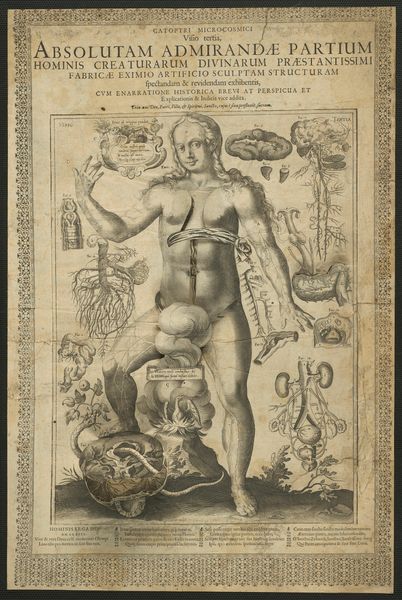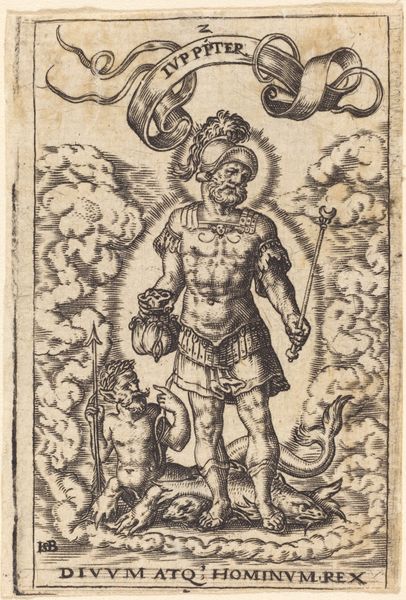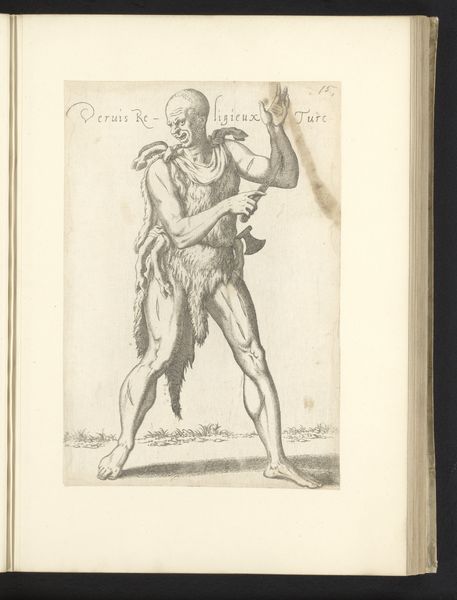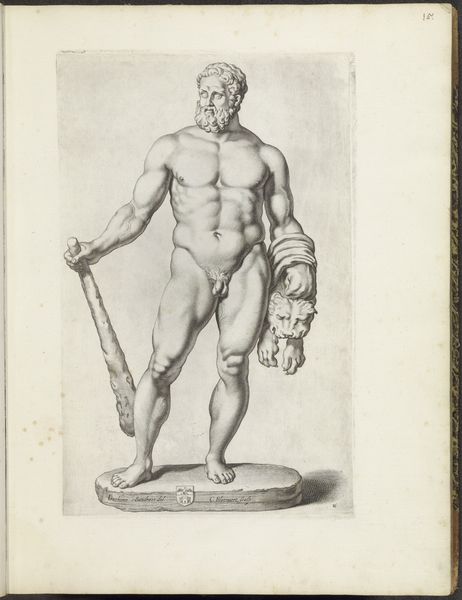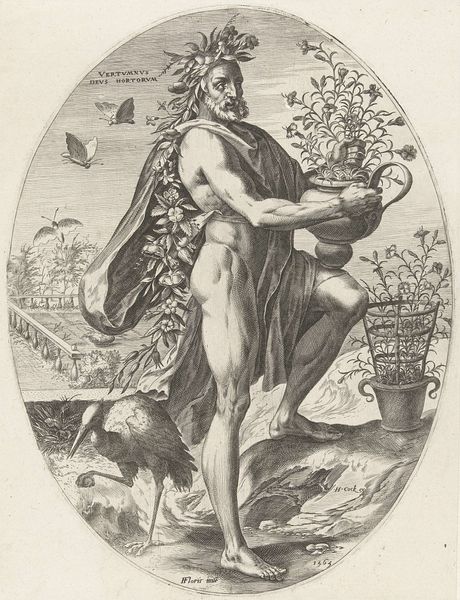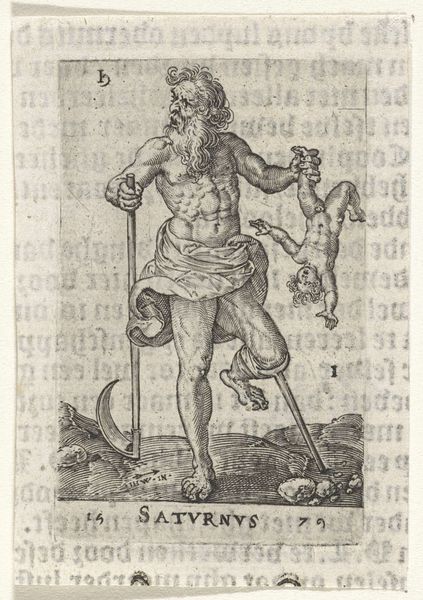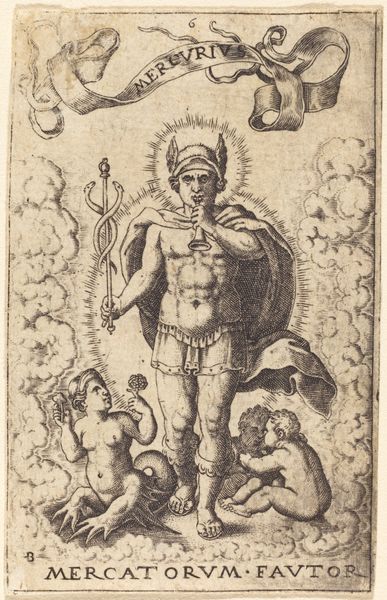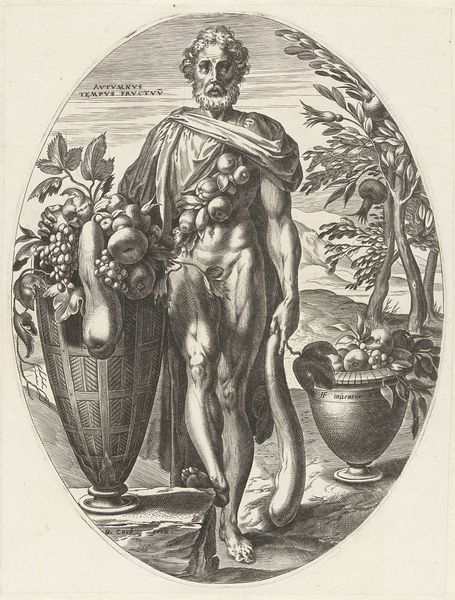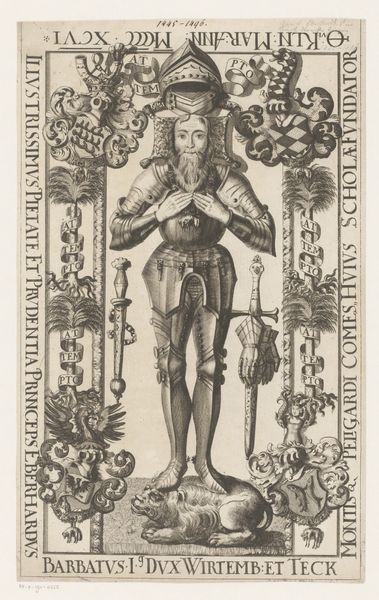
Anatomie en fysiologie van het mannelijk lichaam met details van de buikholte, nieren, het hart, geslachtsdeel en het hoofd 1613
0:00
0:00
print, engraving
#
portrait
#
baroque
# print
#
old engraving style
#
figuration
#
history-painting
#
academic-art
#
nude
#
engraving
Dimensions: height 361 mm, width 267 mm, height 528 mm, width 358 mm
Copyright: Rijks Museum: Open Domain
Curator: This rather striking print, created in 1613 by Lucas Kilian, is titled "Anatomie en fysiologie van het mannelijk lichaam met details van de buikholte, nieren, het hart, geslachtsdeel en het hoofd." Quite a mouthful, isn't it? It is currently housed right here in the Rijksmuseum collection. Editor: The first thing that strikes me is how relentlessly *detailed* this engraving is. The artist renders the interior and exterior of the male body with what seems like exhaustive attention, creating almost a layered effect where symbolism intersects with literal anatomy. Curator: And that level of detail would have been an astonishing feat of labor. The entire print would have been painstaking to create using engraving techniques, building up textures and gradations through lines etched into the plate. It's as much a product of skilled craftsmanship as it is a medical illustration, you know. Editor: Exactly, it goes beyond mere visual representation. Look at how the figure is positioned standing on a globe, his genitals concealed by foliage! It's allegorical, tying the individual body to a broader concept of earthly existence and perhaps a veiled nod to the Adam and Eve narrative. Curator: Interesting observation! I hadn't considered the possible links to religious symbolism but it highlights the layers of knowledge involved in producing and consuming this image. Medical, artistic, philosophical... Editor: Notice the cross and the serpent winding around the base as well, just below his feet. These are well-established religious symbols, hinting at redemption and temptation coexisting in the human form. It encourages us to consider not only anatomy, but also humanity's place within the cosmos and struggle between good and evil. Curator: Which speaks to its intended audience: wealthy scholars perhaps or aspiring physicians. To possess such an intricately rendered guide would have signified education and privilege as well as professional capability. Editor: Seeing this rendering today, it’s impossible to miss how earlier beliefs, symbolism, art-making, and scientific discovery were intimately intertwined. Curator: Precisely. Reflecting on both the labour and symbolism contained within the print, there are clearly stories beyond surface aesthetics that still speak to us today. Editor: Indeed. A visual feast with profound implications about the evolving status of art and science over time.
Comments
No comments
Be the first to comment and join the conversation on the ultimate creative platform.

